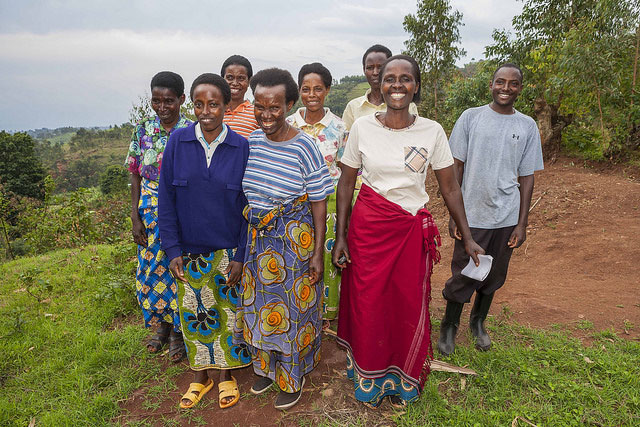In 1961 the victorious Hutu Parmehutu party, after being elected to power, declared a Republic and abolished the Tutsi monarchy. The following year, Rwanda achieved independence and Grégoire Kayibanda was elected the first president of the Rwandan Republic. Tutsis became the victims of official discrimination in virtually all public services and in politics. During Kayibanda’s rule, there were a series of anti-Tutsi massacres in the early 1960s and in 1973. Between 1963 to 1967, 100,000 Tutsis were butchered with machetes and dumped in rivers because of ethnic polarization and hate crime.
Kayibanda was overthrown by his National Defence Minister Juvénal Habyarimana during a coup in July 1973. Habyarimana’s ‘Second Republic’ (1973-1994) claimed to be sympathetic to Tutsis by ‘diminishing’ anti-Tutsi discrimination. However, Habyarimana maintained strong limits on Tutsi advancement through a system of regional and ethnic quotas.
During the leadership of one-party National Revolutionary Movement for Development (MRND), Tutsis continued to experience violence, arrests, intimidation and abuse as Habyarimana’s regime used ethnicity as a political strategy to maintain power. Regional divisions also increased, with northerners (the president’s henchmen) taking over virtually all economic and political power.
Violence was never far from the surface in these times. In 1959 King Rudahingwa of Rwanda had died in mysterious circumstances while under the care of a Belgian doctor. The outbreak of violence that followed marked the beginning of a Rwandan ‘social revolution’, with a peasant revolt that left 20,000 Tutsis dead. Thousands more were forced to flee as refugees, and an estimated 200,000 settled in Uganda. From 1963 to 1967, 100,000 Tutsis were butchered with machetes and dumped in rivers, and in 1973, Tutsi students were massacred in their thousands.
Habyarimana’s regime used ethnicity as a political strategy in order to hold on to power at any cost. Regional divisions increased, with northerners (the president’s henchmen) taking over virtually all economic and political power.
Meanwhile, Rwandans living in exile pressed to return home, however, they were met with no response from the government. As a result of this ethnic divide, in October 1990, the Rwandan Patriotic Front (RPF) launched an invasion from Uganda, which started the Rwandan Civil War.
The civil war lasted until the Arusha Accord, supported by the international community, was signed in 1993 between the RPF and the then Rwandan government. To monitor the peace agreement, the United Nations formed The United Nations Assistance Mission for Rwanda (UNAMIR).
Despite the perceived ‘peace’, polarization, ethnic based hatred, and violence continued. On the 6 April 1994, President Habyarimana signed a final agreement with the RPF, however, on his way back from Dar-es-Salaam, the President’s plane was shot down and he was killed. This event is widely accepted to be the catalyst for the mass killings of Tutsis and moderate Hutu’s and ultimately the Genocide against the Tutsi in Rwanda.

